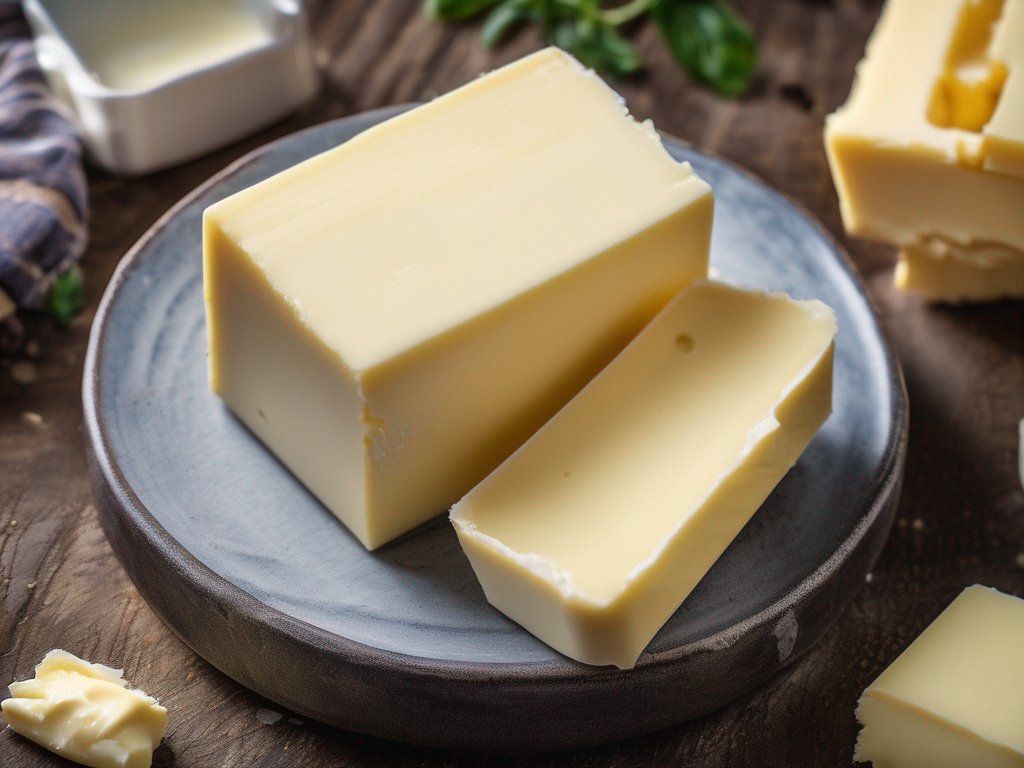
Is It Safe to Use Out of Date Butter?
Get Your Free Food Safety Cheat Sheet
30 most common foods with instant answers. Print it and stick it on your fridge—completely free!
Is It Safe to Use Out of Date Butter?
When it comes to food safety, it's always important to be mindful of expiration dates and storage guidelines. Butter is a staple ingredient in many kitchens, but what happens when you find a forgotten stick of butter in the back of your fridge past its expiration date? Can you still use it safely? In this blog post, we will explore the ins and outs of using out-of-date butter and provide you with practical tips to ensure your butter stays fresh and safe to consume. (Butter)
Understanding Butter Expiration Dates
When you purchase butter from the store, you will notice that it comes with a "best by" or "sell by" date stamped on the packaging. This date is an indicator of when the butter is at its peak quality in terms of flavor and texture. It is not a strict expiration date, but rather a guideline for optimal freshness.
Factors Influencing Butter Shelf Life
Several factors can impact the shelf life of butter, including:
- Storage Conditions: Proper storage is crucial in maintaining the quality of butter. Storing it in the refrigerator at a consistent temperature below 40°F (4°C) is ideal.
- Packaging: Butter that is exposed to air or light can spoil faster. Keep butter tightly wrapped or in a sealed container.
- Quality of Butter: Higher quality butter with lower moisture content tends to have a longer shelf life.
- Contamination: Cross-contamination with other foods can accelerate butter spoilage.
Can You Use Out of Date Butter?
While it's always recommended to adhere to expiration dates, the good news is that butter can often be used safely past its printed date. Here are some key points to consider when determining if out-of-date butter is still usable:
Signs of Spoiled Butter
Before using out-of-date butter, it's essential to inspect it for any signs of spoilage. Some indicators that your butter may have gone bad include:
- Off Smell: Rancid or sour odor.
- Change in Color: Discoloration or dark spots.
- Unusual Texture: Slimy or moldy appearance.
- Taste Test: If it tastes off or has a bitter flavor, discard it.
Tips for Using Out of Date Butter Safely
If your butter is slightly past its expiration date but shows no signs of spoilage, you can still use it safely with these tips:
- Perform a Smell Test: If the butter smells fine, it's likely safe to use.
- Check for Mold: Discard butter with any visible mold growth.
- Test a Small Amount: Use a small portion of the butter to cook or bake before using it in larger quantities.
- Consider the Usage: Cooking butter at high temperatures can help kill any bacteria present.
Proper Storage of Butter
To extend the shelf life of your butter and maintain its quality, follow these storage tips:
- Refrigeration: Store butter in the refrigerator to prevent it from turning rancid.
- Air-Tight Container: Keep butter in an air-tight container to avoid absorbing odors from other foods.
- Butter Dish: If using butter regularly, a butter dish on the counter is suitable for short-term storage.
- Freezing Butter: Butter can be frozen for extended storage. Wrap it tightly in plastic wrap or foil before placing it in the freezer.
Conclusion
In conclusion, while it's essential to be mindful of expiration dates and signs of spoilage, using out-of-date butter can often be done safely with proper inspection and storage practices. By following the tips outlined in this blog post, you can ensure that your butter remains fresh and enjoyable for longer periods. Remember, when in doubt, it's best to err on the side of caution and discard butter that shows any signs of spoilage. Enjoy cooking and baking with confidence knowing that your butter is safe and delicious! (Butter)
Related Posts
Here are some other articles you might find helpful:
Authoritative Food Safety References
These agencies and university labs inform every tip and health precaution we publish.
USDA FoodKeeper – Cold Storage Guidelines
Official refrigerator, freezer, and pantry timelines maintained by the U.S. Department of Agriculture.
Visit USDA FoodKeeperFDA Produce Safety Rule & Grower Guidance
Field-to-fridge handling practices that prevent contamination of fruits, vegetables, and leafy greens.
Visit FDA Produce SafetyCDC Foodborne Illness Prevention Hub
Surveillance-backed guidance on pathogens, symptoms, and steps to reduce foodborne illness risk.
Visit CDC Food SafetyUC Davis Postharvest Technology Center
University research detailing optimal storage atmospheres for produce after harvest.
Visit UC Davis PostharvestPenn State Extension – Home Food Preservation & Safety
Peer-reviewed extension bulletins on safe canning, chilling, and reheating practices.
Visit Penn State ExtensionGet Your Free Food Safety Cheat Sheet
30 most common foods with instant answers. Print it and stick it on your fridge—completely free! Want more? Upgrade to the complete guide with 70+ foods.
Scan your food directly and get instant safety info using our AI-powered camera feature.